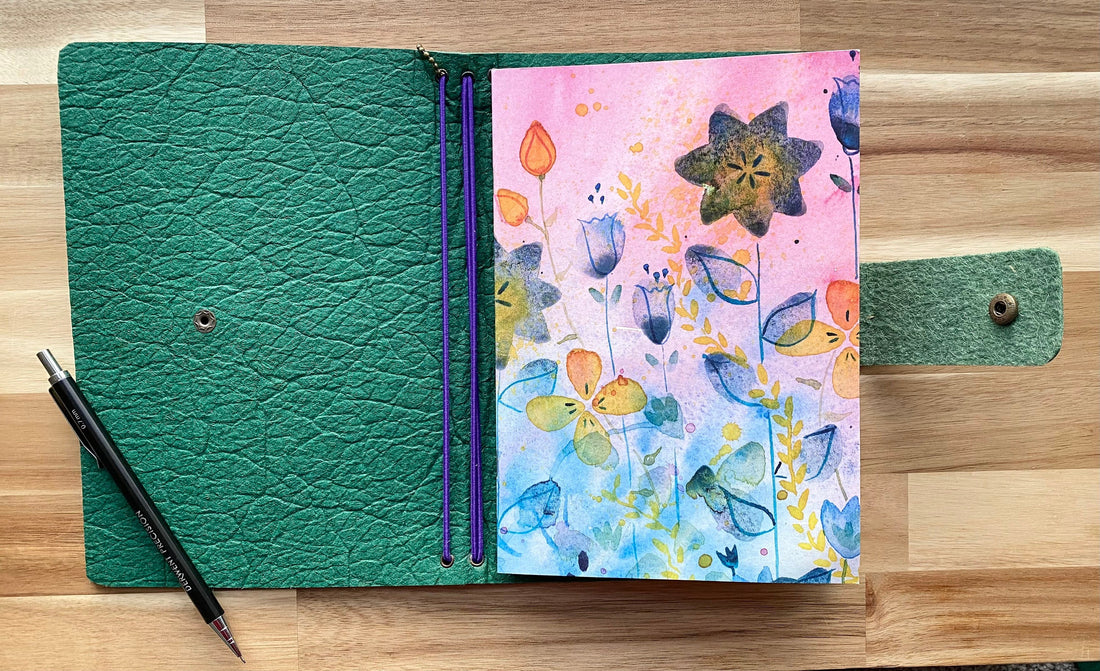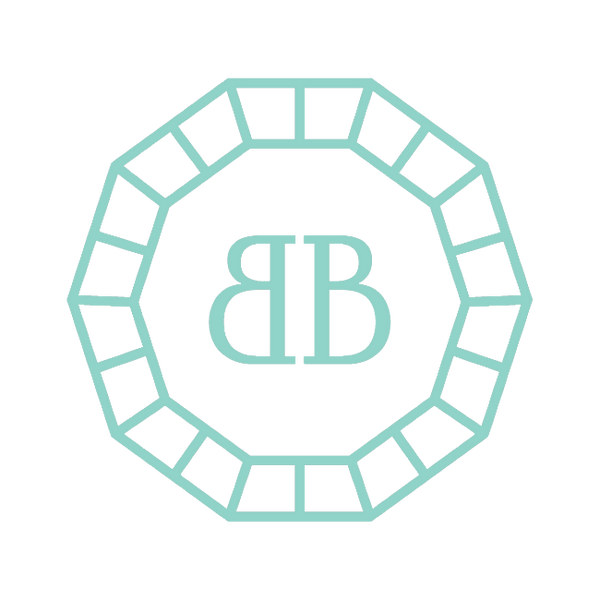
How to set up a simple Bullet Journal ✨ Badibidu-style ✨
Share
This is a blog post version of my Facebook live video (from 13th June 2022) on the same subject, which is available here.

There are so many incredible things you can do with a journal that sometimes the purpose of them can get lost - they're supposed to HELP us make life EASIER and more MANAGEABLE.
Phone apps and technology are amazing but can either be too complicated to learn and use or not flexible enough to our needs. The humble, paper notebook is flexible, affordable and simple to use. I'm hoping this post might just be the little nudge to get you started with bullet journalling which has been a saviour for me in busy brain periods (i.e. always).
My way of bullet journalling is a very simple and functional system which helps me keep track of the world. I love this because its very forgiving if you need to or want to stop for a while, coming back you can just jump straight back in and pick up where you left off. It doesn't stare at you with weeks of unused pre-printed spaces which you have left blank and 'wasted'! It can be whatever you need in that moment: a daily planner, an old fashioned diary for self examination, a wedding planner, a habit tracker. The options are one internet search away and absolutely endless.
I sell colourful, lovely notebooks (if I do say so myself!) with a range of inside paper in my etsy shop but you can use any notebook and any pen. Any at all!



So here it is, all you have to do to get started with a functional bullet journal...
1. Open notebook, number the pages (I do this ten at a time but you can sit down with a cuppa and do the whole thing if you like to complete a job)
2. Very first page should be titled with INDEX
3. Leave 4 sides for the index then write FUTURE LOG as your next title and write the coming months (I leave about a third of the page per month) and this is to write any upcoming events. Add 'Future log p 5-…’ to the index page. Use the future log for everything that isn't happening in the current month... dentist appointments, birthdays, holidays, work commitments if you like.
4. Turn to the next double-page spread and write the month on the left hand side as title (eg. JANUARY) and TO-DO on the right. Down the left of the month you write the days and dates, I find the fastest and easiest way is as follows:
1 M
2 T
3 W
4 T
5 F
6 S
7 S
etc...
On the right under TO-DO you brain dump everything you want to achieve in that month. Then you try and fit the to-do's from the right into the calendar you've just drawn on the left. You will find this tricky because you have only got one line per day and that's the point. Your time and energy are limited and you need to be realistic with both of them. This has been HUGE for me, let me know if you're better at it than I am!
Each time you are ready to set up your next month (towards the end of each month) you take everything from the future log for the coming month and put it into the To-Do list when you do your brain dump on the right-hand side of the page. It's all then included when you try to fit it into the calendar on the left-hand page.
Items which don't fit into the calendar month should be moved (migrated) into a future month in the FUTURE LOG, or deleted! Only let things which are important to you or someone you love or vital to your life to take up your time.
5. Everything else you want to write down to record it or ponder it you just put on the next blank page (no saving pages, see my last post about bullet journalling here), title the page clearly and add your title to the index.
That's the basic system! There are lots of Collections that you can add which will help you track or plan specific parts of your life (and make sure you add them to your index) but these are the basics.
The only slightly extravagance that I go in for is coloured pens and a few stickers. This makes the whole thing more fun in the easiest way possible so I enjoy looking at the notebook more, and its easy to tell the pages apart when I'm flicking through.
This blog post does not cover the full Ryder Carroll version - That incredible system is covered in 'The Bullet Journal Method' by Ryder Carroll. A brilliant system and I love the book, it's very motivating, but also a little overwhelming for me.
This post aims to simply help you open the notebook and do your first pages. This act is motivating in itself and will hopefully help you to feel capable of trying it out for a little while and doing more reading on the subject if you want to dip in further.
If you want a bit more information but don't want to go down the full rabbit hole quite yet I find this YouTube video excellent. It's not too long and also keeps it simple although it does cover a little bit more of the original method than I do here.
If you're looking for ways this system can be used once you're comfortable with the basics, I chatted with a big group of stationery-loving friends and journal writers and here are 100 of the many many reasons they gave me that they use notebooks. There are so many more but it's a pretty inspiring list even in it's imperfect current state!
1. External memory
2. Ideas for future blog posts
3. shopping lists/shopping list templates
4. drawing and doodling
5. financial stuff
6. writing your novel
7. work stuff
8. Notes before bed
9. scrap journalling
10. to read list
11. nature journalling
12. recipes
13. financial plans
14. poetry
15. mood trackers
16. menstrual tracking
17. physical/mental health tracking, symptom tracker and doctor notes
18. to do list
19. life goals
20. mind maps
21 language learning
22 letters to your deity (as a witch)
23 pet tracking
24 online usage
25 spending record/no spend challenges
26 gardening records
27 sewing projects
28 favourite quotes
29 bible study notes
30 sermon notes
31 movie list
32 care journal for family member
33 learning journal
34 cleaning prompts
35 tracking grandchild ages/sizes/gift ideas
36 gifts given and recived
37 holiday planning
38 party planning
39 spare time plans
40 car maintenance notes (MOT/service date etc)
41 Appointments
42 Couch to 5k plan
43 Bucket lists
44 classic long form Dear Diary
45 Personal data records
46 habit trackers
47 Insurance details
48 Home service provider details
49 Travel history
50 education hisotry
51 Skin care products being used
52 Intentions for the year
53 Therapy notes
54 Budget planning and calculating
55 Usernames and passwords (stay at home)
56 Gratitude journal
57 Creative projects
58 brain dump
59 Packing list
60 Worries
61 Details vacation plans minute by minute
62 Pros and cons when decision making
63 First and last frost days
64 Goal setting
65 Food tracking for training
66 Memory keeping
67 medical records
68 Chronic condition management
69 Newborn tracking/feeding records
70 Podcasts
71 Stress relief
72 Scripture
73 art journal
74 morning pages
75 scribble journal
76 self reflection
77 healing and shadow work
78 calligraphy practice
79 meal planning
80 productivity record
81 starting new routines
82 a ‘to buy’ list to avoid impulse buying
83 minimal journalling
84 Addresses/contact details
85 Birthdays
86 Nutrition monitoring
87 shift patterns
88 time tracking
89 to do list
90 what I'm waiting for and from who
91 what questions have been asked to who
92 answer when it comes back
93 calendar and deadlines
94 meeting notes
95 delegated tasks to oters
96 next steps
97 appointments
98 phone calls received and made w contact info
99 time off records annual leave
100 continuity records so colleagues can continue work in your absence


